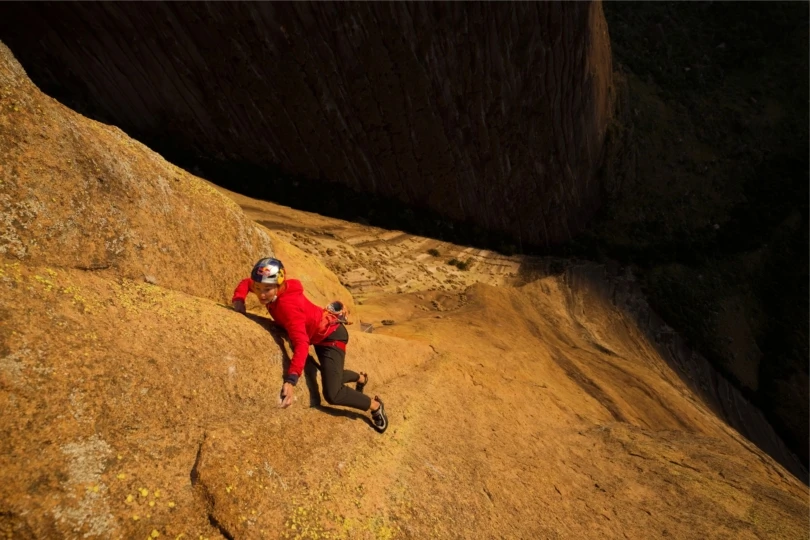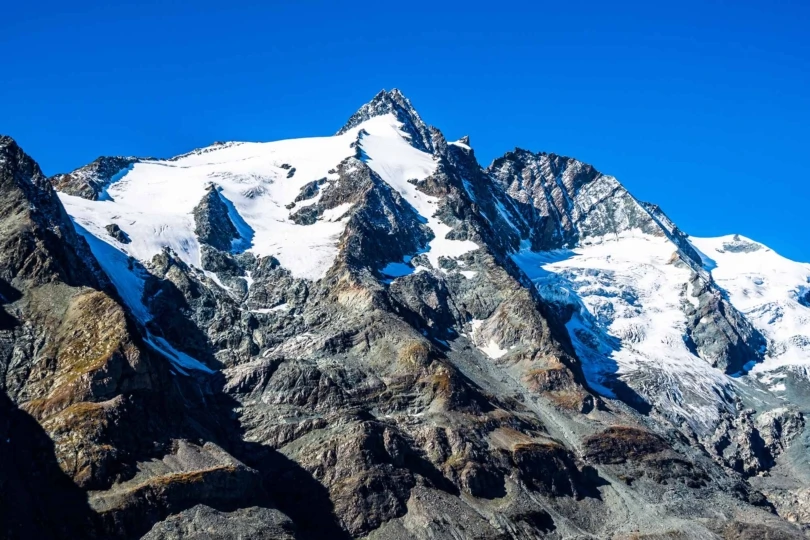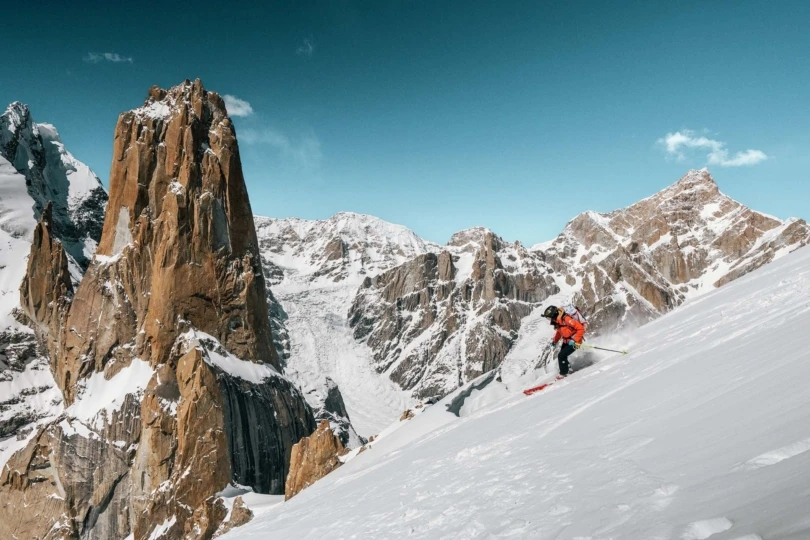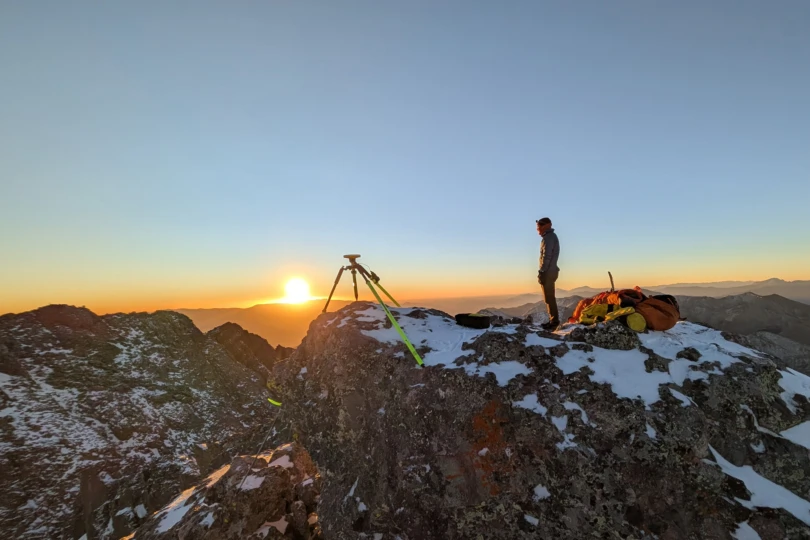Whether pebble wrestling or summit seeking, having all the gear you need is essential to a day well spent climbing. There’s nothing worse than getting to the crag and realizing that you forgot that one piece of essential gear!
To ease your mind and help you focus on your climbs, we’ve come up with a comprehensive checklist of all the gear you’ll need for each discipline. From bouldering to trad, we’ll cover each climbing type’s essentials, making you feel confident you have what you need.
Download Printable ChecklistBouldering
Bouldering is the climbing discipline of high-stress moves and low-stress gear! For many, this is a great way to get outside without worrying about gathering a multitude of equipment. Read on for the essentials.
Climbing Shoes
Climbing shoes are the most basic gear needed by climbers of every discipline. Coming in a variety of materials, shapes, and features, there are all-around climbing shoes for beginners to special shoes designed just for bouldering.
An aggressive shoe with a downturned shape is preferred to pull and grab on small or overhung holds while bouldering.
Approach Shoes
Climbing shoes should not be worn off the rock. This prevents deterioration and damage and, most importantly, saves you from terrible foot pain. Although you can get to some climbing areas with any old shoe, others will be best suited for a climbing approach shoe.
An approach shoe is a tennis shoe and climbing shoe hybrid. The soles are made with climbing shoe rubber, and they often have a loop for carabiner attachment. Approach shoes allow for secure scrambling with sticky rubber, can be carried up climbs and worn on descents, and provide comfort for approach hikes and crafting.
Crash Pad

The most specific piece of gear to bouldering is a crash pad. A crash pad is a folding pad for you to fall, hangout, and sometimes nap on!
Frequently made with carrying and synching straps, climbers often don’t need an additional daypack, as food, water, and layers can be stored in the folded pad.
A crash pad is one of the major purchases for bouldering, so it can be helpful to start off with a budget-friendly pad such as the Metolius Session II.
Climbing Chalk & Chalk Bag
Whether it’s hot and humid or you’re a bit nervous, sweaty hands can make climbing feel nearly impossible. From the gym to the crag, you don’t want to forget chalk.
There are many types of chalk and chalk bags. Most boulderers use a large bucket-style chalk bag kept on the ground. Liquid chalk is a less messy alternative and is used in bouldering and single-pitch climbing as well.
Brush
Some chalk bags come with an extra loop to store a climbing brush. This brush is used to remove excess chalk or grease on hard boulder or sport climbs. Without it, heavily used holds on routes can become slippery and hard to grab.
Sport Climbing
Sport climbing is the next step up in gear use. You will still need climbing shoes, chalk, and a chalk bag (a smaller pouch version to attach to your harness), but you’ll now move from crash pads to ropes! This climbing style involves more gear and adds the need for a climbing partner, along with a bit more knowledge of systems, knots, and communication.
Harness
One of the primary gear items needed in sport and trad climbing is a climbing harness. This item allows you to attach to the rope, hang your gear, and belay up your friends.
Belay Device

Another piece of essential gear for roped climbing is a belay device. This device allows the belayer to catch the climber, feed rope, and lower the climber safely. The most simple tool is called an ATC. It uses friction as a way to hold the climber’s load when they weight the rope. This device relies on the belayer to properly hold and manage the rope.
Many climbers are now using assisted-braking devices. These devices also rely on the belayer’s rope and device management but offer more efficient rope handling and backup safety features.
It’s hard to choose the best assisted-braking belay device, as there are so many. I personally use a Petzl GRIGRI (a popular option for many climbers) for lead and toprope belaying on sport routes. I then use an ATC in guide mode for toprope belaying someone from above on a multipitch route.
Climbing Helmet
Although it’s commonplace to see photos of people without, many experienced climbers will tell you tales of that time they were glad they wore a helmet.
Helmets are used for both the belayer and climber in sport and trad climbing. As a person who’s had a concussion or two, I can say that the dorky look outweighs the recovery from hitting your head via a bad accident, rockfall, or a climber dropping their gear.
If you’re climbing indoors (like at a gym), you can skip the helmet, as there are no loose rocks that have the potential to fall on you. Everywhere else, though, you should wear one.
Rope
Any form of climbing aside from bouldering requires a rope. Many gyms provide ropes, but it’s up to you to ensure you have what you need outside. Climbing ropes come in varying lengths and diameters. When sport and trad climbing, you will need a dynamic — not static — rope to ensure a safe and comfortable fall.
For most outdoor areas, a 60-70m rope around 9.4-10 mm in diameter will suffice. Ropes come with varying features such as differing middle markers, changing patterns or colors, and dry treatment for water resistance.
Locking Carabiner
Know that all belay devices require a locking carabiner to attach it safely to your harness. An ATC in guide mode requires two. Therefore, make sure that you bring along all the locking carabiners you’ll need to safely operate your belay device.
Quickdraws
Quickdraws are another vital piece of gear needed to sport climb. As the leader scales the wall, one end of the ‘draw is clipped to a permanent bolt while the other end is clipped to the rope. Many sport climbs require 10-12 quickdraws but may take more or less depending on the route’s length.
One major feature to note is that sport climbing draws often have one loose and one stiff end. The loose end is attached to the bolt, and the stiffer end is attached to the rope to make clipping easier and more efficient. I appreciate the carabiner shape and rigid build of the Petzl Spirit Express, especially when making some semi-desperate clips. Other models our editors like are the Black Diamond Neutrino and C.A.M.P. USA Orbit Mixed Express Quickdraws.
Rope Bag
One item specific to sport climbing is a rope bag. While trad and alpine climbers often use a climbing-specific backpack, a rope bag is a handy and efficient way to carry and protect your rope at the crag.
Rope bags have a comfortable carrying system with a tarp that lays out to protect the rope from dirt and mud. Rope bags make an efficient packing system to help you quickly move from route to route.
With so many available, it helps to do some research to find the bag for you. If you’re looking for a budget option, Trango’s rope tarp keeps your rope organized, keeps dirt and sand away, and comes in at $20.
Traditional Climbing
Traditional (trad) climbing is another form of roped climbing. However, instead of clipping in bolts already in the wall, a climber needs to place their own protection into cracks. Additionally, trad climbers often need to create their own anchor system, as many trad climbs are multipitch.
Both of these points mean that trad climbing requires significantly more equipment and knowledge beyond the gear needed for sport climbing. A trad climber will still need ropes — often two — along with quickdraws and alpine draws, slings, belay devices, helmets, shoes, and a harness.
Climbing Backpack
Trad climbing requires the most gear and often has long approaches. Due to the heft of equipment, food, water, and layers, there are climbing-specific packs made to sit well and move with your body.
For the second climber, a 20-30L bag will do. On long approaches, many climbers bring a 30-40L bag. Some essential features include adjustable hip and chest straps, external straps and storage, and the occasional internal pocket.
Cams
A distinguishing feature of trad climbing is the need to place your own protection as you ascend. Trad climbs have few to no bolts. Camalots, aka “cams” or “friends,” are placed in cracks and secured to your rope as you ascend.
As cracks vary, so do cams. They come in various sizes coded by color and number. The average rack consists of cams ranging from 0.4 to 4. There are bigger and smaller cams than this, so it will be essential to know the overall size of the crack you’ll be climbing.
Nuts & Nut Tool
In addition to cams, trad climbers use nuts, or “stoppers”, as an alternative protection piece in cracks. Both cams and nuts of varying sizes are often found on a trad climber’s rack. Nuts are generally lightweight and take up little space. Nuts are typically placed into the small cracks with constrictions and pulled securely or “slotted” into place.

As nuts don’t have triggers to adjust for size, they can easily become stuck if heavily weighted into a narrow and constricting crack. This often requires the use of a nut tool to help pound or wiggle it out of place.
PAS
A personal anchor system (PAS) is another commonly used piece of gear that allows you to securely attach to an anchor or extend a rappelling device. It’s girth-hitched to your harness and makes it easy to attach yourself to the anchor with a locking carabiner. A PAS is also essential if a sport climb requires you to clean your anchor from the top of the route.
Slings & Anchors
If trad climbing on a multipitch route, the climber will need to be ready to make anchors without the use of bolts and be prepared for self-rescue or other unforeseen circumstances. Therefore, carrying additional gear is commonplace:
- Dyneema or nylon slings or “runners” of varying lengths
- Cordelette around 20 feet long and 7 mm in diameter; two are needed per party; you can adjust the diameter and length as your experience and needs dictate
- Extra locking and non-locking carabiners
- Autoblock made of cord, sling, or premade Sterling Rope for rappelling
Conclusion
Rock climbing is a gear fanatic’s paradise. With many brands and variations for each item, there is an overwhelming world of gear from bouldering to trad climbing. The above list is by no means exhaustive but will help you narrow your focus to the most essential items. Once you have what you need, get out there, stay safe, and send it!








